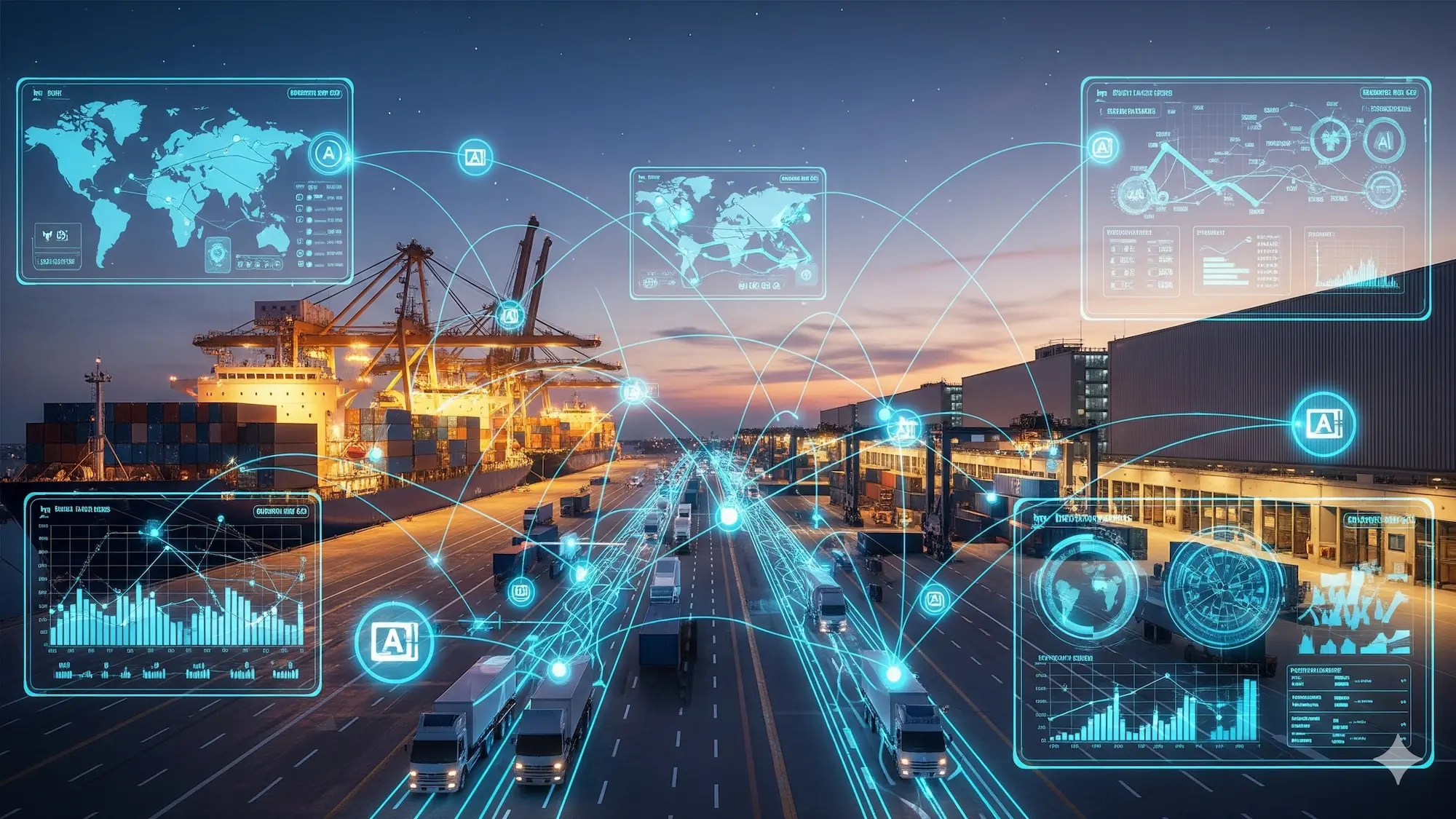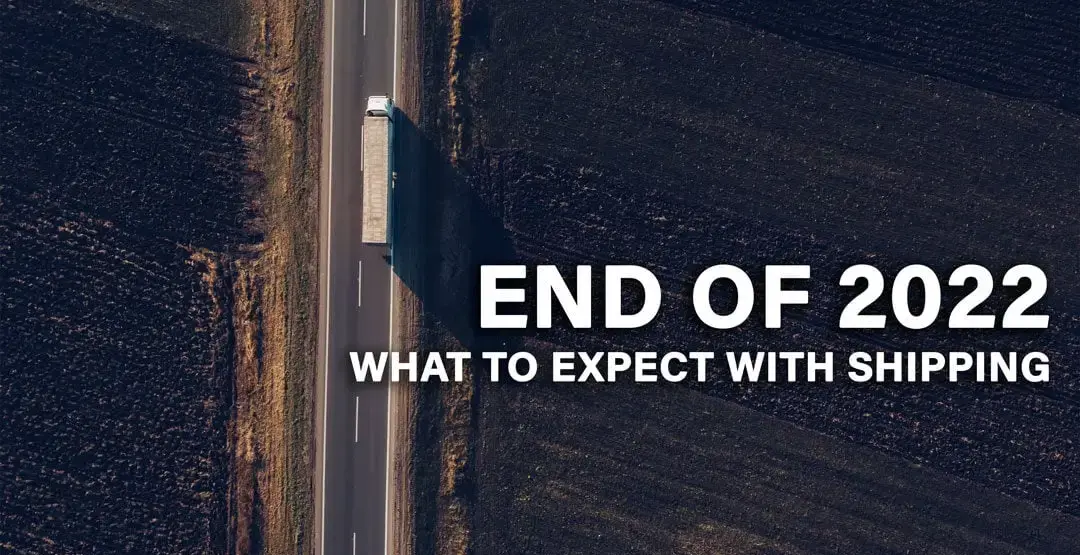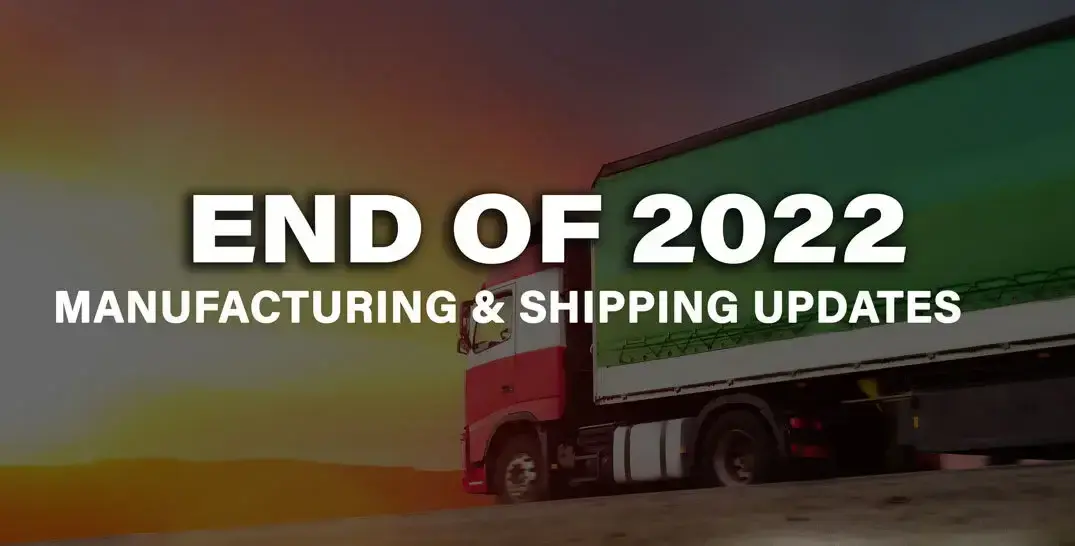
End-to-end visibility is crucial for a resilient supply chain. It moves you past the frustration of vague tracking updates and into a world of proactive, informed decision-making. But if true supply chain visibility is the destination, how do you get there? The path isn't a single road—it's a complex network of interconnected technologies that work together seamlessly.
Many businesses know they need to modernize, but feel intimidated by technology. The world of logistics technology can seem like a collection of confusing buzzwords, from IoT and AI to blockchain and cloud platforms. These tools aren't futuristic concepts but the gears and levers of a modern, intelligent freight forwarding operation. While all forms of logistics providers can benefit from an optimal tech stack, it's freight forwarding where it really shines.
This blog will outline the tech stack that powers accurate supply chain visibility. We'll explain each component's role in the ecosystem and how it transforms data into your greatest asset.
The Foundation: IoT and the Data-Gathering Layer
Think of the Internet of Things (IoT) as the sensory nervous system of the supply chain. While a traditional freight forwarder might rely on manual updates, supply chain IoT devices constantly collect and transmit real-time data from every point of the journey. These sensors are the source of the critical information that makes visibility possible.
What kinds of data are we talking about?
-
Real-Time Location Tracking: This is the most basic function. GPS trackers on containers, trucks, or railcars constantly feed their precise location, eliminating the guesswork of "where is my shipment?"
-
Environmental Monitoring: For temperature-sensitive goods like pharmaceuticals or fresh produce, sensors monitor conditions like temperature and humidity. If a refrigeration unit fails, an alert is triggered immediately, allowing for a proactive response before the entire shipment is lost.
-
Condition Sensors: In addition to temperature, these devices can detect shock, tilt, or light exposure. This is essential for delicate or high-value items, as it provides an indisputable record of handling and prevents damage claims.
This constant flow of information creates a digital twin of your physical supply chain, but that data is just noise without a way to interpret it.
The Brains: AI & Machine Learning for Predictive Insight
If IoT is the nervous system, then Artificial Intelligence (AI) and Machine Learning (ML) are the brains that process all that information. Raw data is simply a record of the past; AI turns it into a powerful tool for predicting the future.
Here's how these technologies elevate freight forwarding technology to the next level:
-
Predictive Analytics: AI models analyze vast amounts of data—historical shipping patterns, weather forecasts, port congestion reports, and more—to predict potential delays. A system might flag a shipment and say, "Based on current conditions at the port of entry, this container has a 75% chance of being delayed by 48 hours." This is the core of proactive logistics.
-
Dynamic Route Optimization: ML algorithms can instantly recalculate the most efficient route. If an accident blocks a major highway or a rail line goes down, the system can automatically suggest an alternative route, saving time and fuel.
-
Smart Automation: AI can automate routine tasks, such as generating customs documents or updating stakeholders with status changes, freeing your team to focus on complex problem-solving.
This intelligence layer makes a supply chain resilient, allowing you to anticipate and address issues before they impact your business.
The Hub: Cloud Platforms and Centralized Integration
All of this data and analysis needs a home. This is where cloud-based platforms come in. Think of the cloud as the central hub—the unified dashboard where all the information from your IoT devices and the insights from AI converge. It's the single source of truth for your entire supply chain management operation.
The benefits of a cloud platform are twofold:
-
Eliminating Data Silos: In traditional freight forwarding, information is fragmented across different systems, spreadsheets, and emails. A cloud platform breaks down these silos, providing a shared, real-time view for everyone, from your warehouse manager to your customer.
-
Scalability and Accessibility: Cloud solutions can handle massive amounts of data and are accessible from anywhere worldwide. This allows for seamless collaboration among international teams and gives you the power to monitor and manage your logistics network from a laptop or a mobile device.
The Seal of Trust: Introducing Blockchain
We've yet to discuss blockchain in our blogs, but it will be crucial in future-proofing your freight forwarding and logistics industry. While it sounds complex, it makes sense to think of it as a shared, digital notebook for your supply chain that no one can erase or change.
How It Works
Imagine every step a shipment takes—from leaving the factory to arriving at the warehouse. Instead of a single company keeping its own record, each step is written down as a "block" of information. This block is linked to the one before it, creating a "chain." Blockchain creates a secure, decentralized, immutable record of every transaction and data point. It's not about tracking a package's location but its digital history.
Every participant in the supply chain—the shipper, the carrier, the warehouse—gets a copy of this notebook. If someone tries to change an old entry, everyone's copy will show that it's been tampered with. This makes the record transparent, secure, and impossible to fake, ensuring everyone has a single, trustworthy source of information about a product's journey.
While IoT, AI, and cloud computing handle the "how," blockchain adds trust and transparency.
This has profound implications for a data-driven supply chain:
-
Enhanced Security: It prevents data tampering and fraud, which is critical for high-value goods and sensitive information.
-
Streamlined Auditing and Compliance: Because every transaction is securely recorded, audits and compliance checks are significantly faster and more reliable.
-
Automated Processes: "Smart contracts" can automatically trigger payments or other actions when a specific condition is met, like a container arriving at a destination.
From Abstraction to Reality: A Combined Example
Let's examine a single scenario to see how all these technologies work together. A company is shipping a high-value, temperature-sensitive pharmaceutical product from Europe to the U.S.
-
IoT sensors on the container constantly monitor its location and temperature, with the data streaming live to a cloud platform.
-
An AI system analyzes the data and alerts the team that, due to an unexpected heatwave along the route, the container's internal temperature is rising and may soon exceed the safe threshold. The AI then recommends the nearest depot for a cooling check.
-
The cloud platform instantly updates the status for all stakeholders, and the blockchain logs a secure, verifiable record of the temperature spike and the subsequent check.
This seamless integration ensures product integrity, mitigates risk, and provides a clear audit trail—all in real time.
The Path to an Intelligent Supply Chain
The tech stack that powers a modern freight forwarder is sophisticated, but its purpose is simple: to create a logistics network that is not just reactive but truly intelligent. These tools—IoT, AI, cloud platforms, and blockchain—are no longer optional; they are the essential building blocks of supply chain resilience.
Achieving this requires more than just understanding the technology; it requires a strategic partner who can implement and manage it effectively. Customodal combines this advanced technology with decades of human expertise to deliver a proactive logistics solution. We believe that an intelligent supply chain is your most significant competitive advantage—partner with Customodal to turn the promise of logistics technology into a reality for your business.





